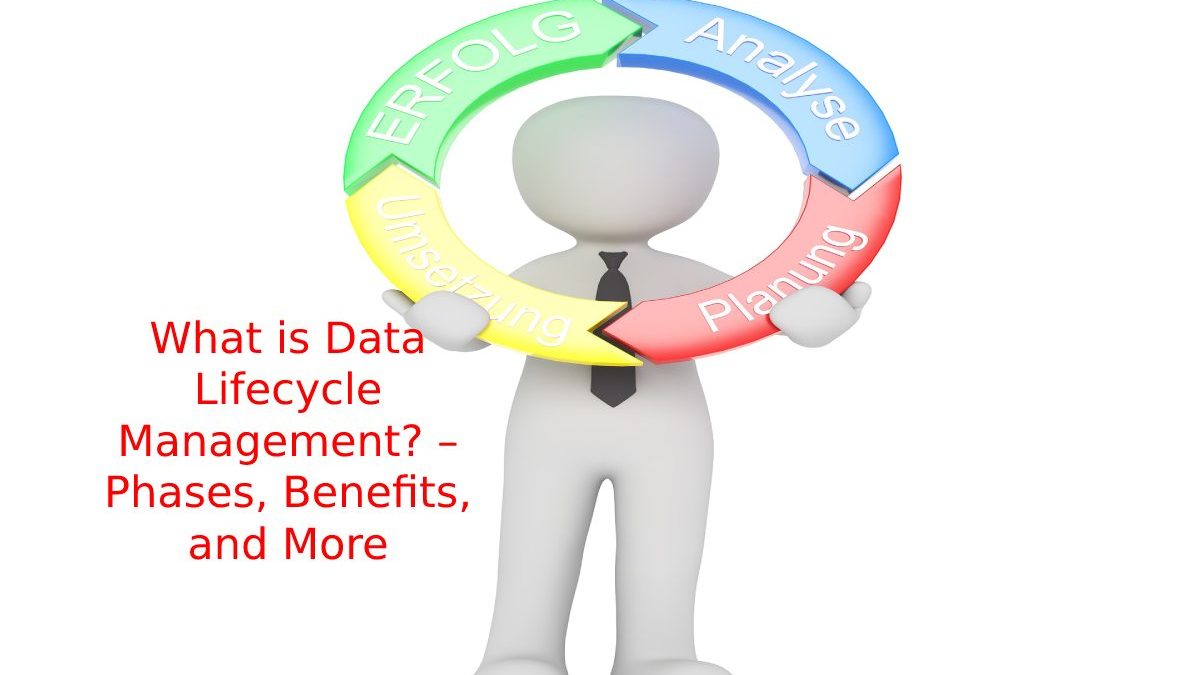Table of Contents
Data Lifecycle Management
By data lifecycle management, we mean the information management process following the life of data from the moment it is first create and stored to the moment it is archived or destroyed when it is no longer helpful. It is an analogous concept to the software life cycle. Which deals with software at all stages of its development, from initial conception and design to future updates and patches.
What are the Phases of Data Lifecycle Management?

Data lifecycle management is typically divide into three distinct stages that encompass data throughout its life. These three stages are creating, keeping, and withdrawing, explained like this. First, we have the creation and acquisition of the data. Then we have to consider the retention and protection of these, and then we have to look at their removal. Finally, there are other small phases within these “categories”, such as data collection, data protection, and data destruction when necessary.
Let’s See It In Detail:
Data acquisition and creation. This first stage refers to when data is created or transferred to the system, which involves creating files, classifying them for easy retrieval, and determining access controls.
Data retention and protection. Once the data is acquire, it must be stored and preserve. Therefore, it is about guaranteeing the redundancy of the data through backup security by using protection solutions such as encryption and physical security of the server and accuracy, continually validating and auditing files to ensure data accuracy.
The withdrawal of data means that you have to get rid of them when they are not helpful. It implies either the archiving of the data or its destruction because it is not operational.
Benefits of Data Lifecycle Management
Companies that apply data lifecycle management and ensure sound management of the information they generate in their daily operations have many immediate advantages, such as:
- An adequate data lifecycle management strategy allows compliance with the requirements implemented by each industrial sector for data storage. Furthermore, it guarantees a good data protection infrastructure, which helps your security in case of risk or emergency. It applies to both internal information and customer data with whom the company works.
- The extraction and maintenance of information throughout the life cycle of the data allow always to have up-to-date values.
- Availability of clean, functional and accurate data available to all users. It increases the agility and efficiency of company processes.
Best Practices for Applying Data Lifecycle Management
Here are some of the most central things to consider when establishing a data lifecycle management policy:
- Create and define the data types that govern the treatment of each kind of file.
- Use a consistent naming scheme that applies to all data in the organization. Making sure everything has the correct name makes your data easier to manage and access.
- Save the new data through a backup plan, which guarantees redundancy and protects us from possible data loss due to accidents, disasters or ransomware.
- Consider implementing a file sync and share service.
- If infrequently use, archiving data is recommend or needs to be retained to meet regulatory standards.
- It is necessary to clear the space by destroying the data when it reaches the end of its useful life. A proper destruction or disposal policy is essential to ensure that nothing is accidentally delete and needs to be archive for later reference.
The Information Life Cycle
The information must be manage throughout its life cycle, which begins when the document is create or received. It then covers their use, storage, retrieval, and maintenance. The end of the life cycle is disposition and destruction or permanent retention under the organization’s records retention schedule. The information must also be manage using appropriate security and protection practices, mainly when dealing with private and confidential information.
Main Steps in Information Lifecycle Management
The first step in information lifecycle management is an information audit. It is the perfect time to review existing policies and procedures and learn what documentation is available, where that information is locate, and what devices it is store on.
Then it’s time to rally support, gain executive buy-in, and mobilize the team responsible for information lifecycle management. The organization’s leadership must be involve for subsequent activities to be successful. Once the endorsement is obtain, it is time to establish a committee of workers representing the IT, data protection, quality, legal advice, and file and information management departments. This team can then create and implement policies and procedures that must be applied consistently across all systems. Along with this, the committee must plan the best way to provide adequate training for all workers, which is consistent with their expected contribution in developing new strategies. Once information lifecycle management has been implement, it is necessary to review,
Conclusion
It’s no longer possible to reason about enterprise data as separate chunks of information. Data is everywhere now. More than that, it is all interconnected. The same body of data permits through many hands at any organization and informs decisions across multiple departments. As a result, corporate data has become a cohesive living thing that flows throughout information systems.

